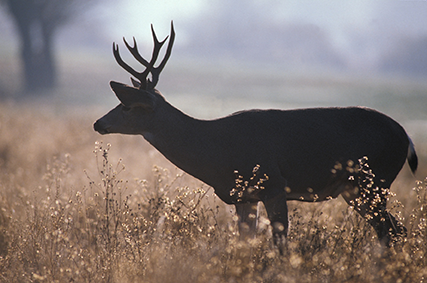Lapua Blog: Choosing the caliber for a hunting rifle – part one
The Lapua blog features posts about hunting, sport shooting and ammunition in general, written by various experts in the fields. Enjoy!
Choosing the caliber for a hunting rifle – part one
Article written by Ville Pohjola, freelance writer and hunting enthusiast
There are a lot of myths regarding the stopping power of hunting rifles. Firearms technology and ballistics are concepts that have been complicated by the most interesting theories over the past decades. Partially because the issue has been confounded with hype and fancy terminology – and partially because highly complicated terminal ballistics issues have been translated into layman’s terms.
However, the only thing that actually connects the hunter and the game animal physically is the bullet. The stopping power of a hunting rifle isn’t based only on bullet size, or speed. And certainly not on the cartridge’s calculated power nor the size of the case. Still, we usually make our choice by comparing the charts that show joules or foot-pounds, muzzle velocities and trajectories. But just looking at a single parameter does not give a comprehensive picture about the overall effectiveness of a caliber.
Another thing that complicates the discussion is the way the human mind works. We want power, size and looks even in situations where it doesn’t help. Concepts like ”shock impact”, ”kinetic energy”, ”stopping power” and ”energy transfer” are based on a great many factors, some valid, some questionable. These terms have started to take on a life of their own, because we just love everything big and powerful. Unfortunately, terminal ballistics don’t work that way. No such force exists that would make the target fly from the sheer impact of the bullet like we see in the movies.
With dozens of factors making the decision harder, a hunter should be able to choose the right caliber for his needs. If not by looking at the parameters mentioned earlier, how then?
Choosing the proper bullet for the animal is the key issue. The bullet does all the work, and therefore what it does on impact is the one thing that matters.
Respect the Game
The number one goal for every hunter should be a clean, fast and ethical kill. What does that mean in practice? Unfortunately many hunters today accept the wounded animal travelling some distance before dying. This might be due to the fact that we focus on the wrong things, such as big entrance and exit wounds for easier tracking. The wrong focus can be due to poor bullet selection, a problem that could be avoided before even taking the shot. The reason may also simply be bad shooting, and poor bullet placement. But instead of easier tracking, shouldn’t we try to avoid the need for it? It is a paradox that we put more effort into ensuring easy tracking than ensuring a clean and ethical kill in the first place.
It is vitally important to understand what the actual effectiveness of a hunting rifle is based upon. As mentioned, it comes down to terminal ballistics, i.e. what the bullet does upon impact with the vital organs of a game animal. A good goal is that the animal should be dead 10 seconds after the bullet strikes. This is possible only if the bullet causes enough damage on vital organs. No, there is no shock that shakes the life out of moose or deer. In some respects, it even works in the opposite direction. White tailed deer, for example, often run long distances under the influence of shock. It is a prey species, low enough in the food chain so it has reactions which are geared for furious escapes. The shock is part of the animal’s system; caused by pain and fear, it makes the animal run. The only way to avoid that scenario is to shut down the system before the animal has the possibility to react.
In the end, it doesn’t matter what size of holes the bullet makes in the skin and muscles. Ultimately, it all comes down to respecting the game. A properly chosen bullet that performs as needed, placed precisely within the animals vital organs, ensures a quick, humane and clean kill. This means less meat loss for the hunter, a better return on his investment, and a more rewarding experience in the field.
The second part of this text will be published in January. Happy New Year!
Photo copyright: Nammo Lapua Oy